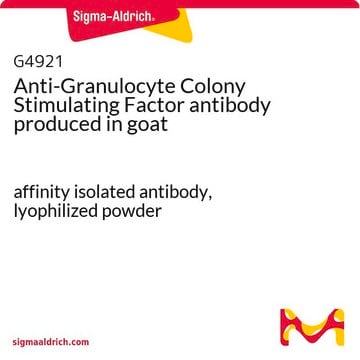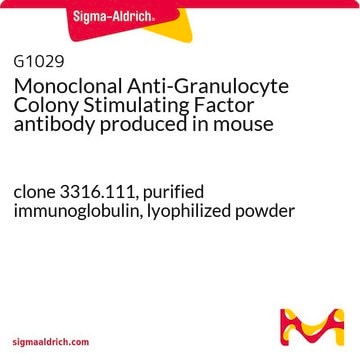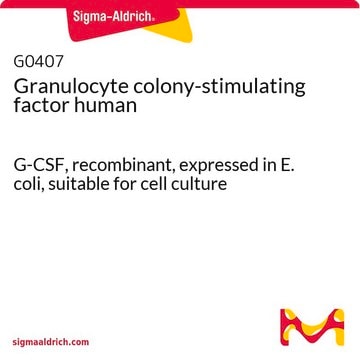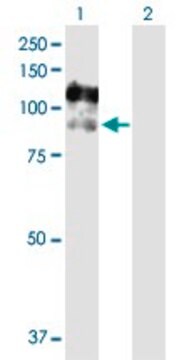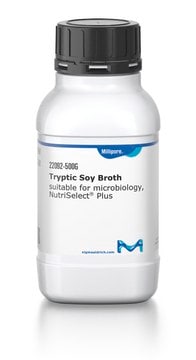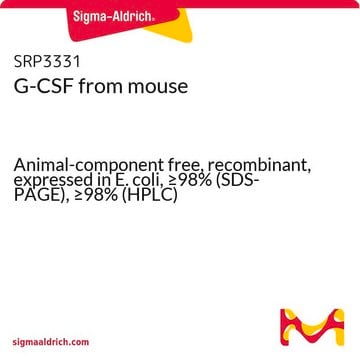G5421
Monoclonal Anti-Granulocyte Colony Stimulating Factor antibody produced in rat
clone 67604, purified immunoglobulin, lyophilized powder
Synonym(s):
Anti-Csf3, Anti-Csfg, Anti-G-CSF, Anti-MGI-IG
About This Item
Recommended Products
biological source
rat
Quality Level
conjugate
unconjugated
antibody form
purified immunoglobulin
antibody product type
primary antibodies
clone
67604, monoclonal
form
lyophilized powder
species reactivity
mouse
technique(s)
capture ELISA: 2-8 μg/mL
neutralization: suitable
western blot: 1-2 μg/mL
isotype
IgG1
UniProt accession no.
storage temp.
−20°C
Gene Information
mouse ... Csf3(12985)
General description
Monoclonal anti-granulocyte colony stimulating factor recognizes mouse G-CSF. The antibody shows less than 0.06% cross-reactivity with recombinant human G-CSF.
Immunogen
Application
Physical form
Disclaimer
Not finding the right product?
Try our Product Selector Tool.
related product
Storage Class Code
13 - Non Combustible Solids
WGK
WGK 1
Flash Point(F)
Not applicable
Flash Point(C)
Not applicable
Personal Protective Equipment
Certificates of Analysis (COA)
Search for Certificates of Analysis (COA) by entering the products Lot/Batch Number. Lot and Batch Numbers can be found on a product’s label following the words ‘Lot’ or ‘Batch’.
Already Own This Product?
Find documentation for the products that you have recently purchased in the Document Library.
Our team of scientists has experience in all areas of research including Life Science, Material Science, Chemical Synthesis, Chromatography, Analytical and many others.
Contact Technical Service